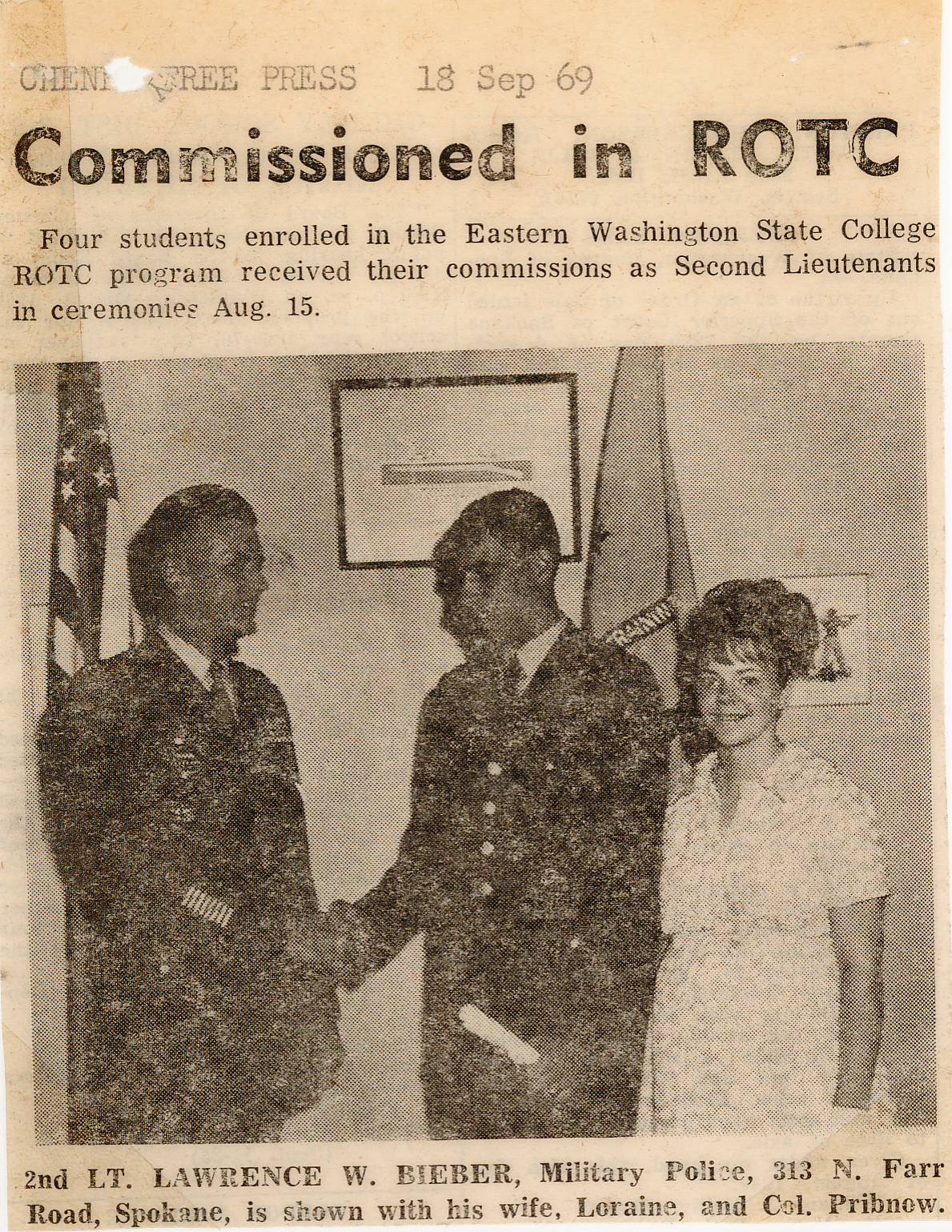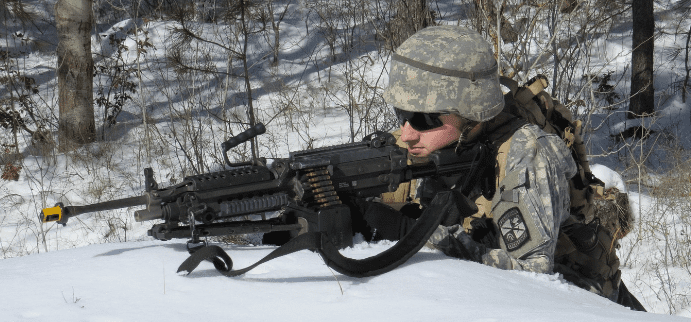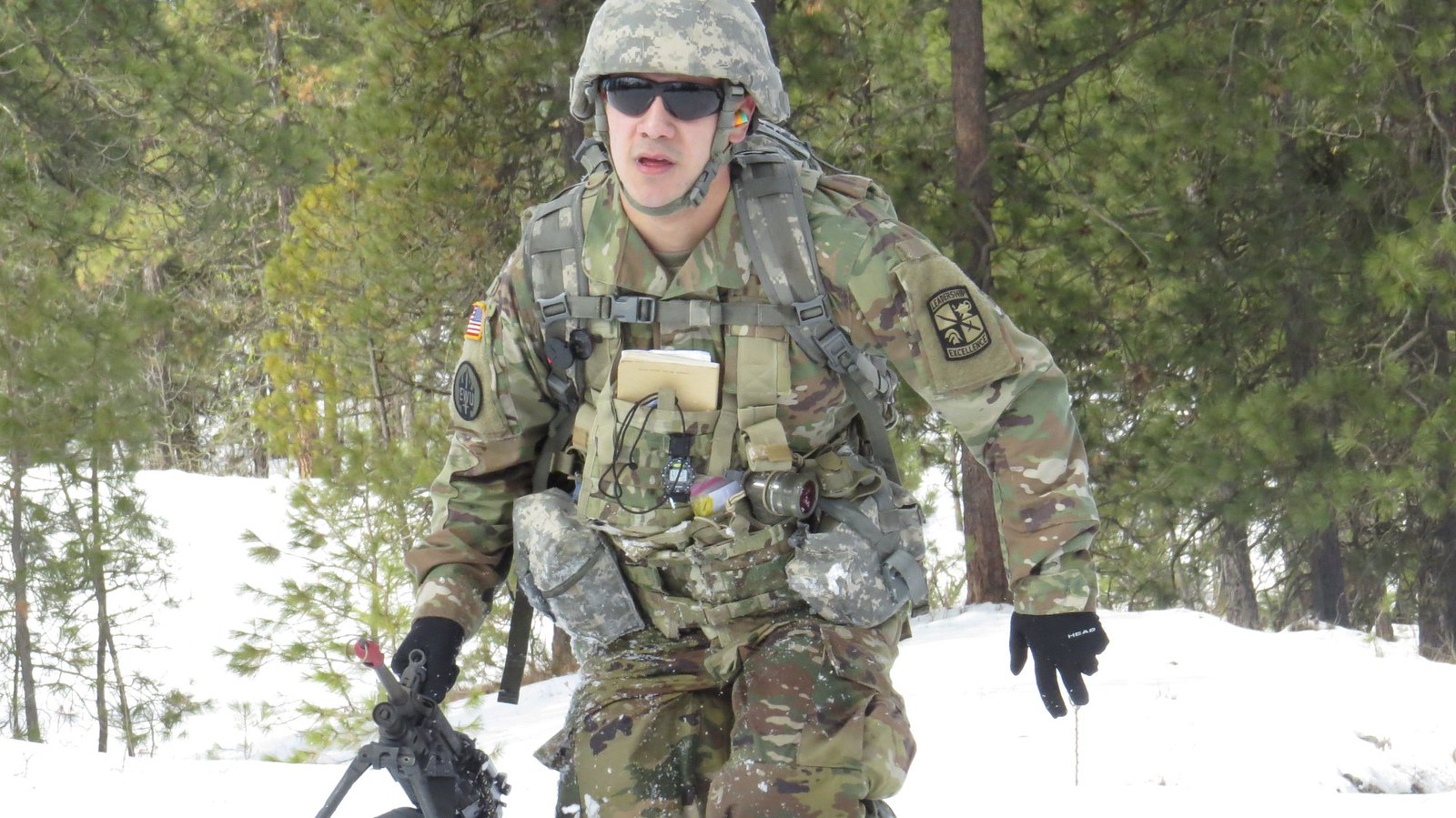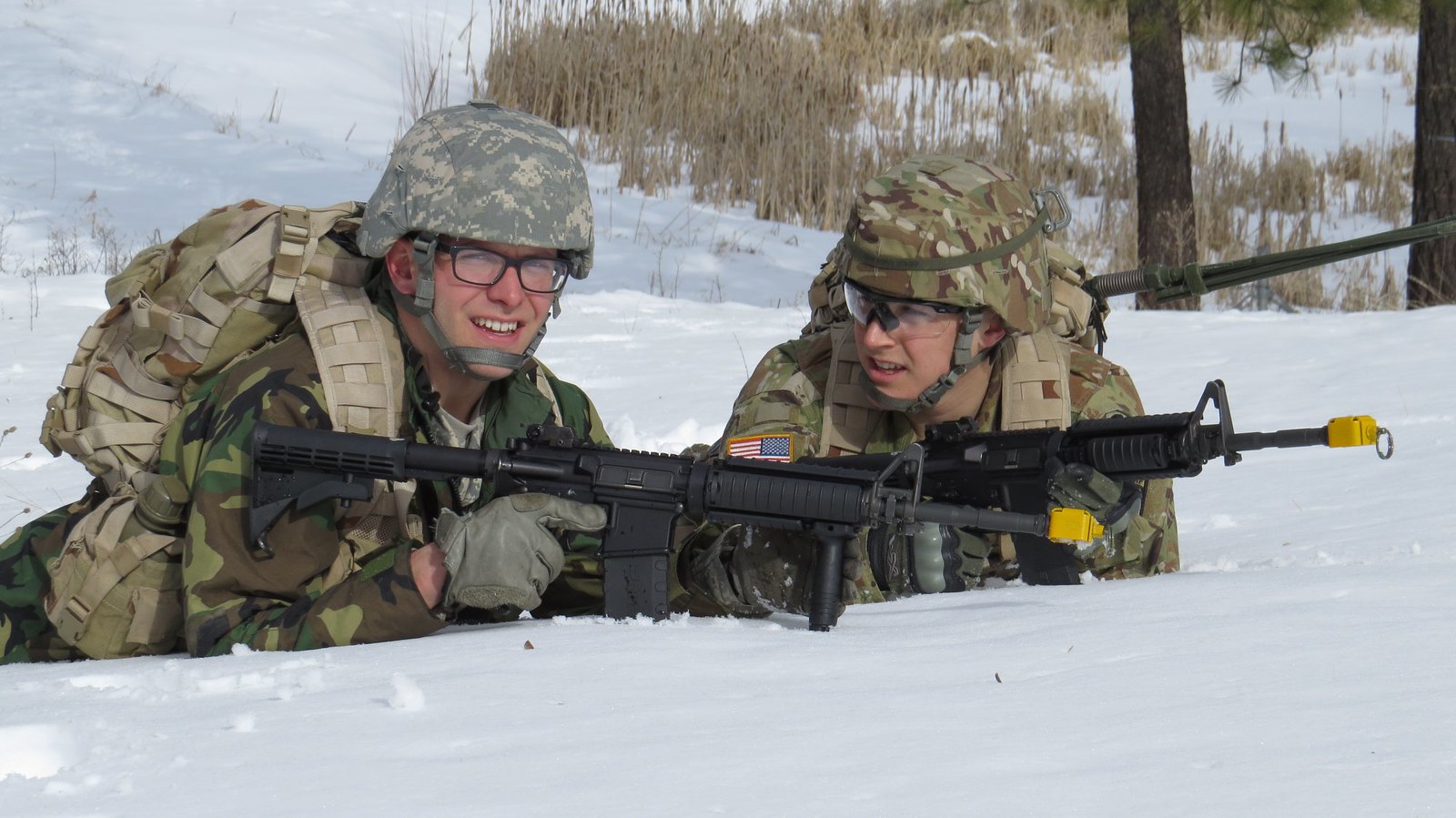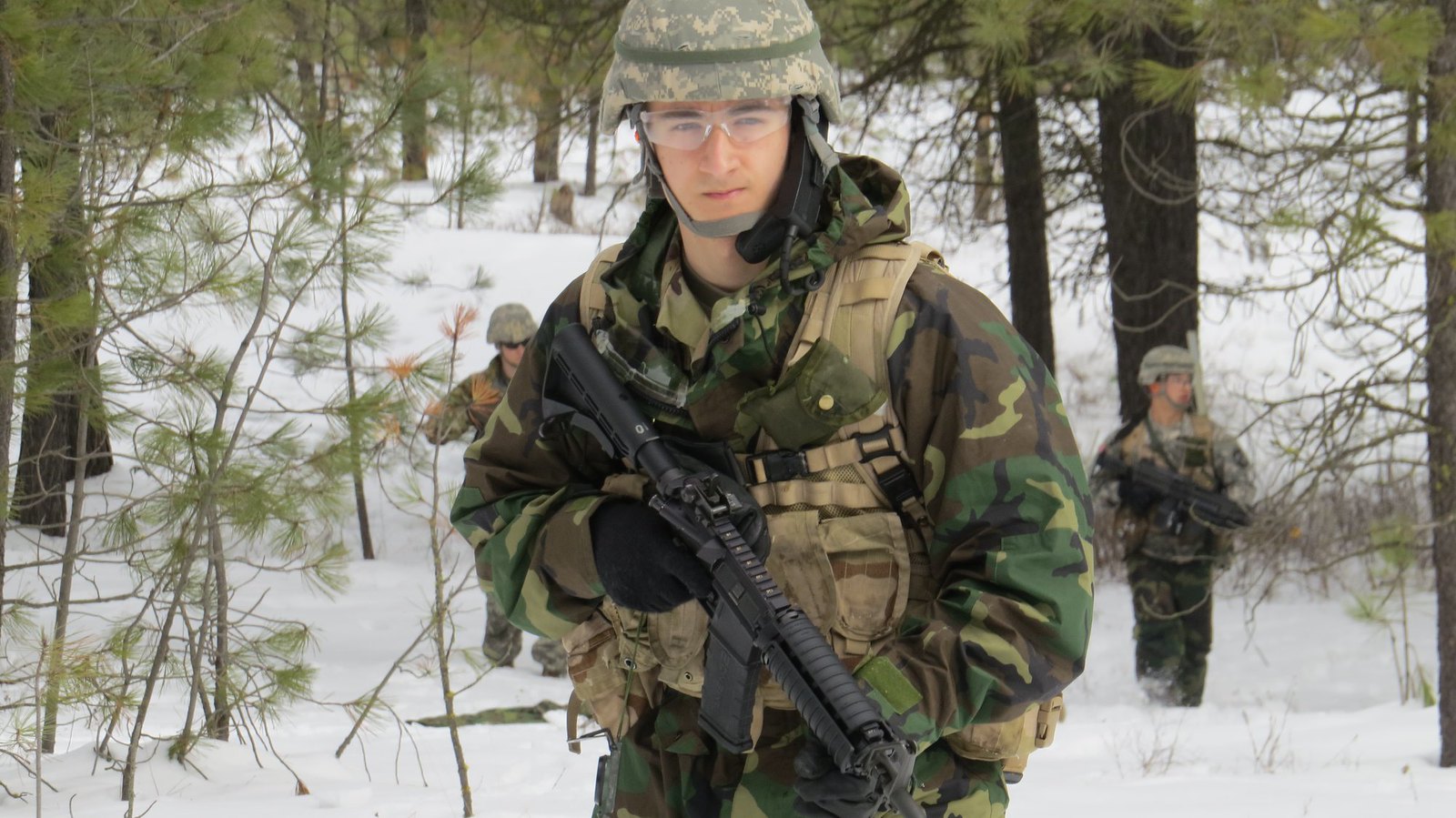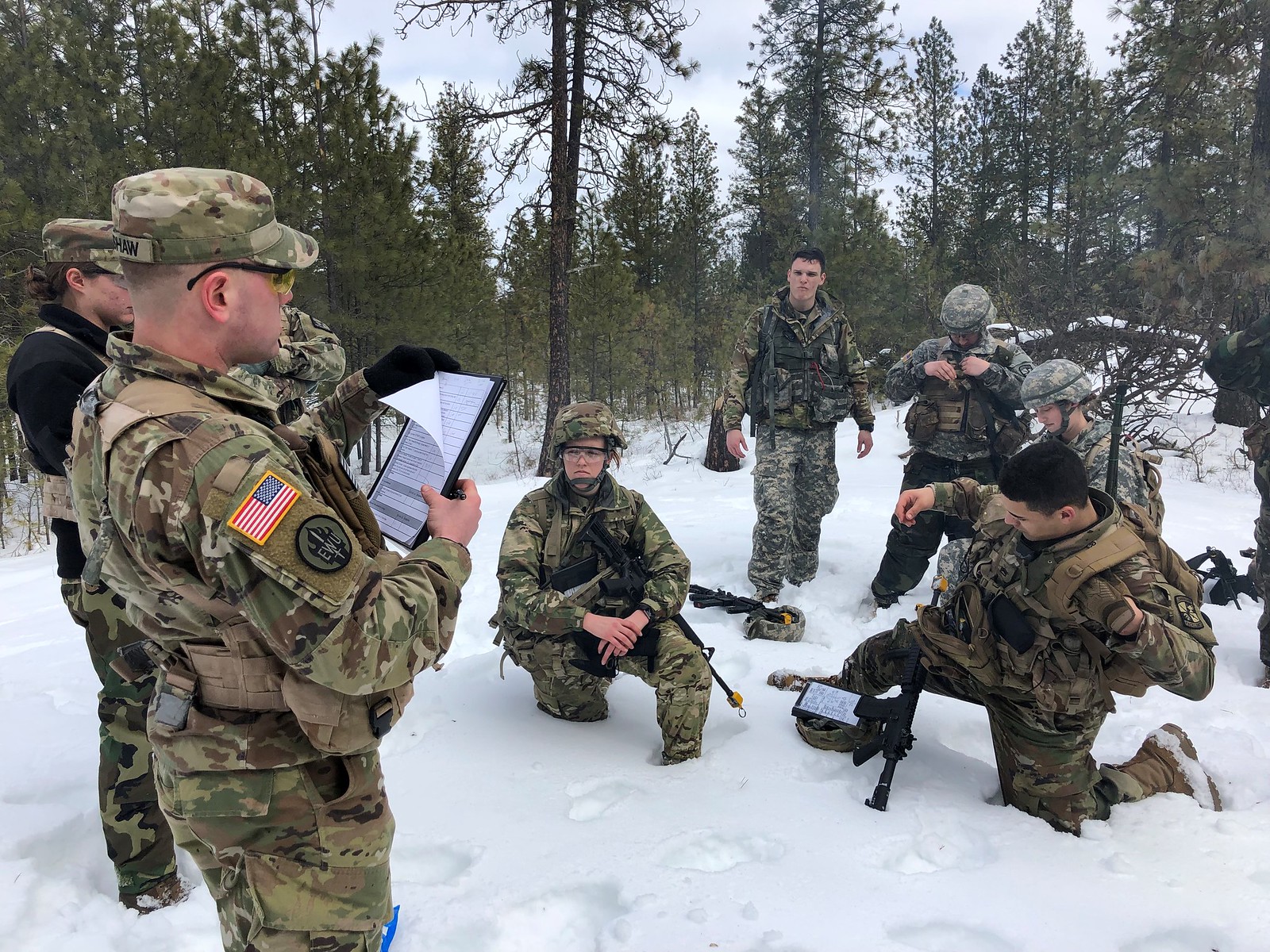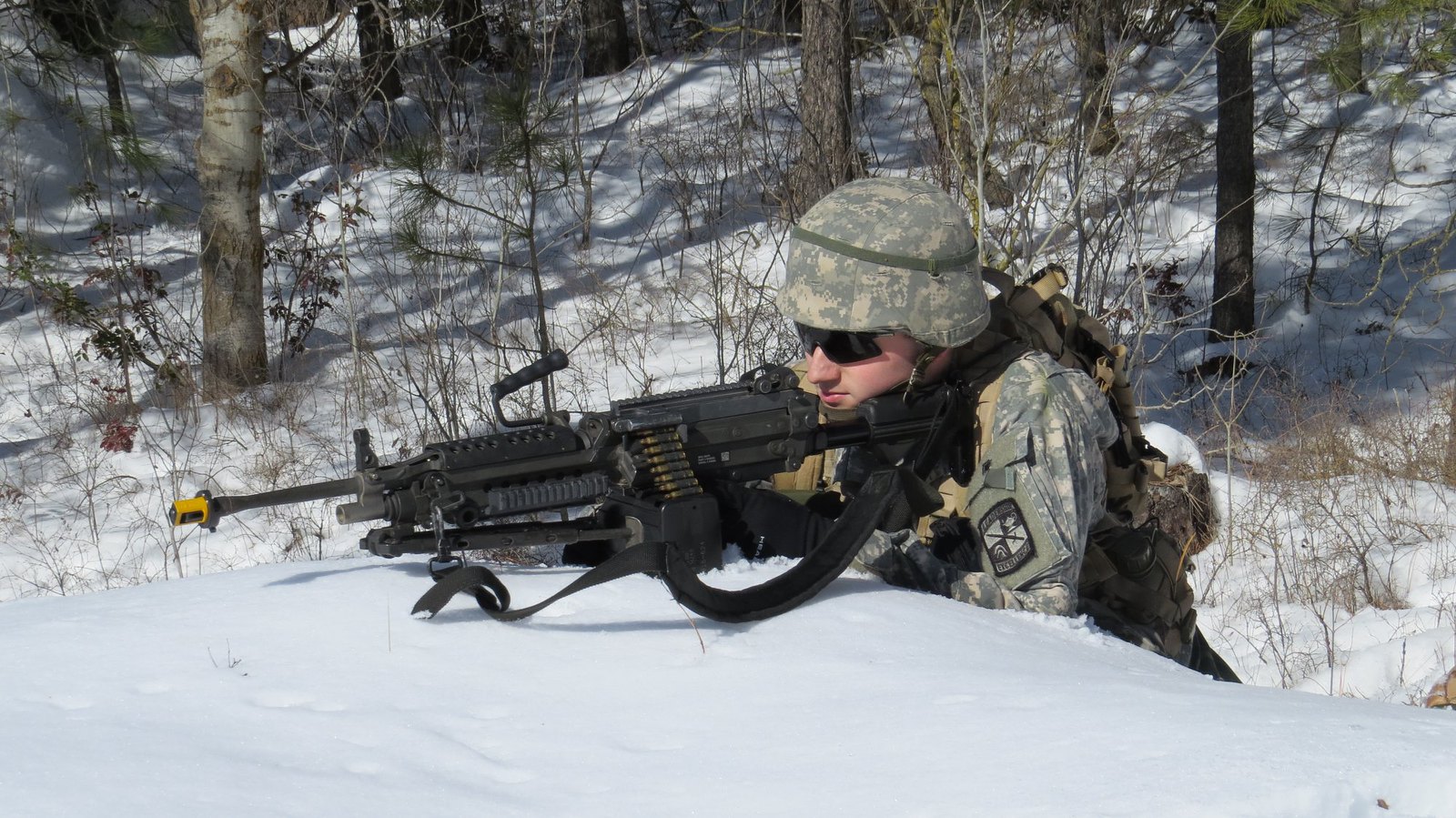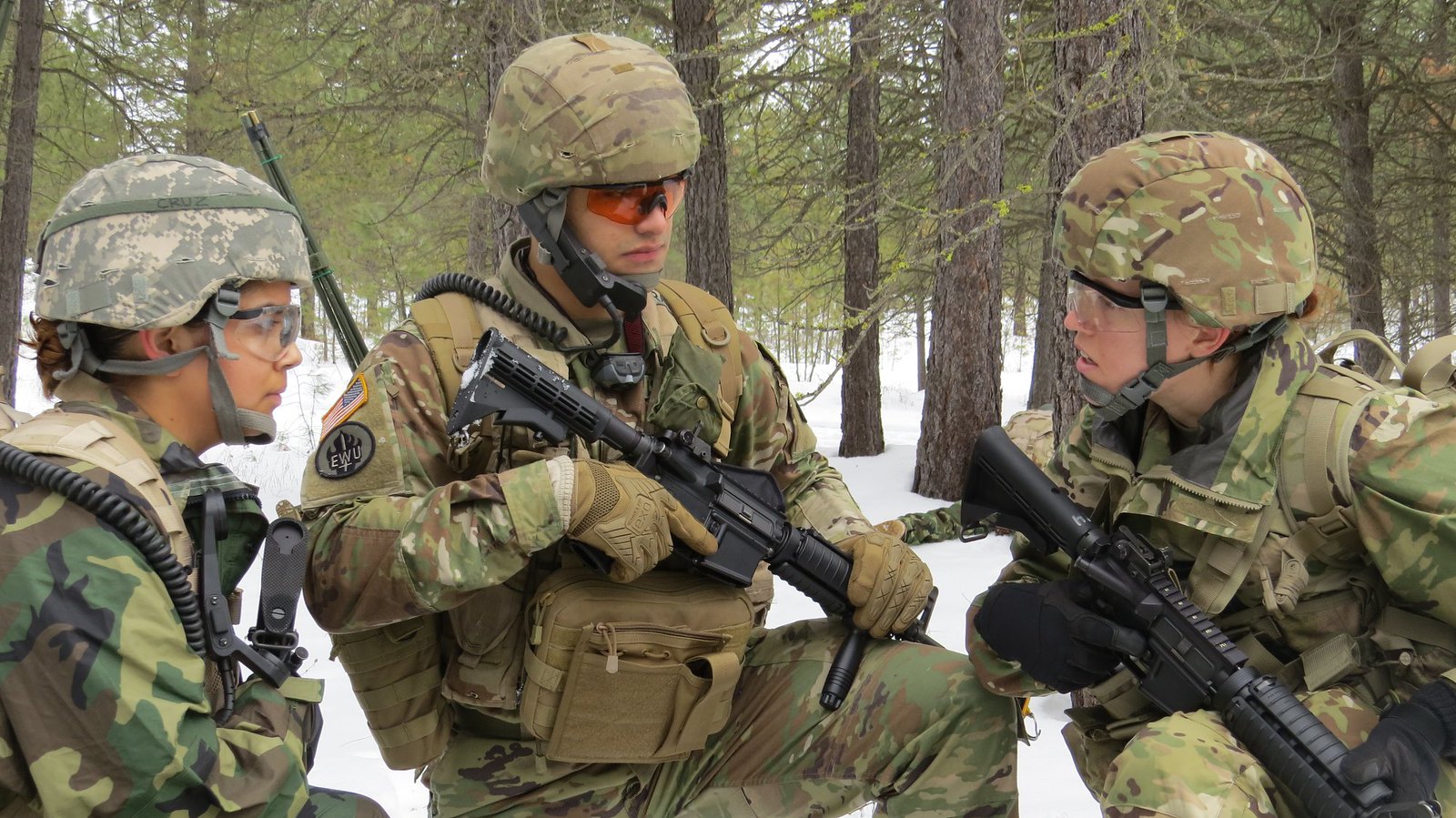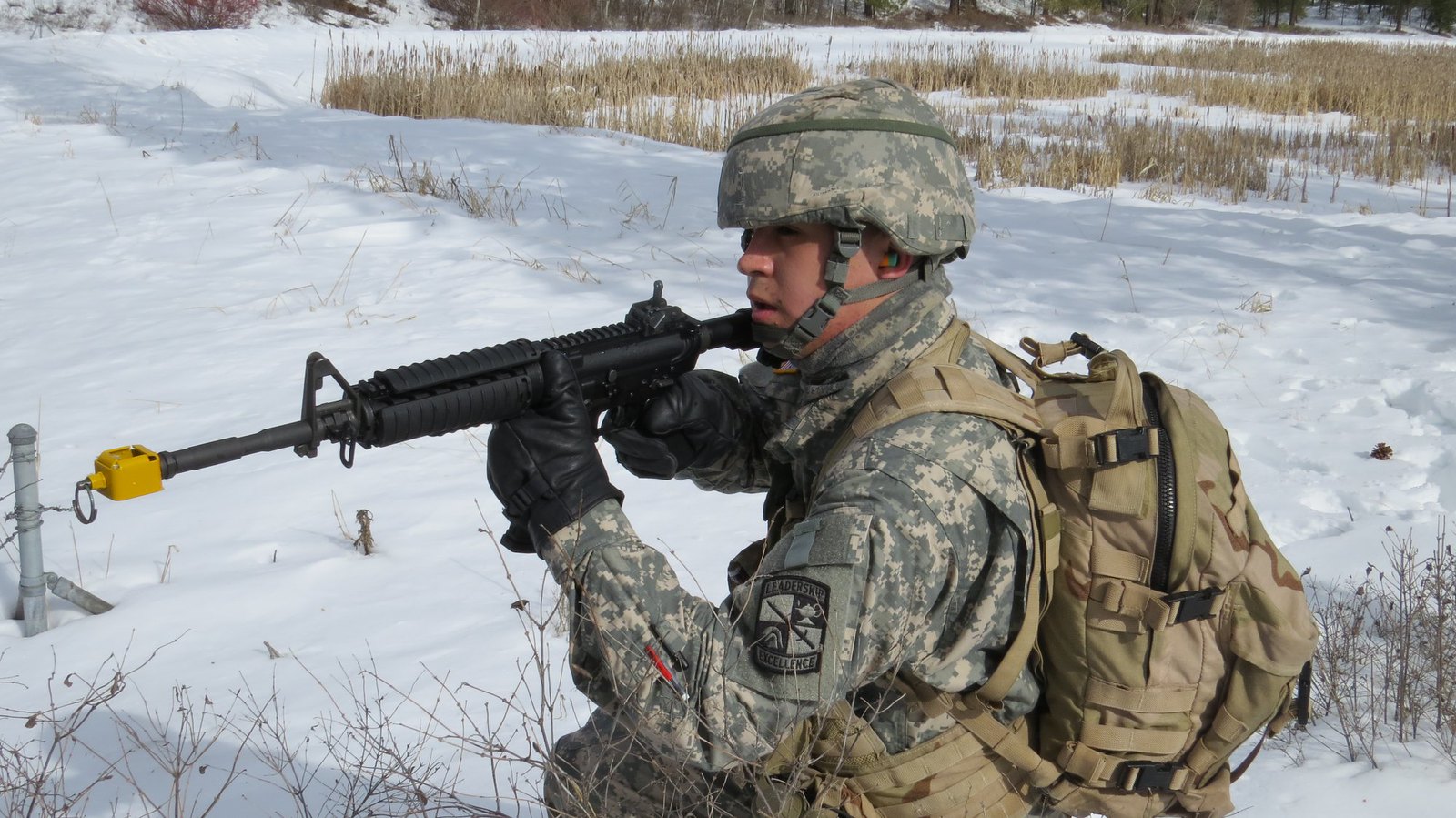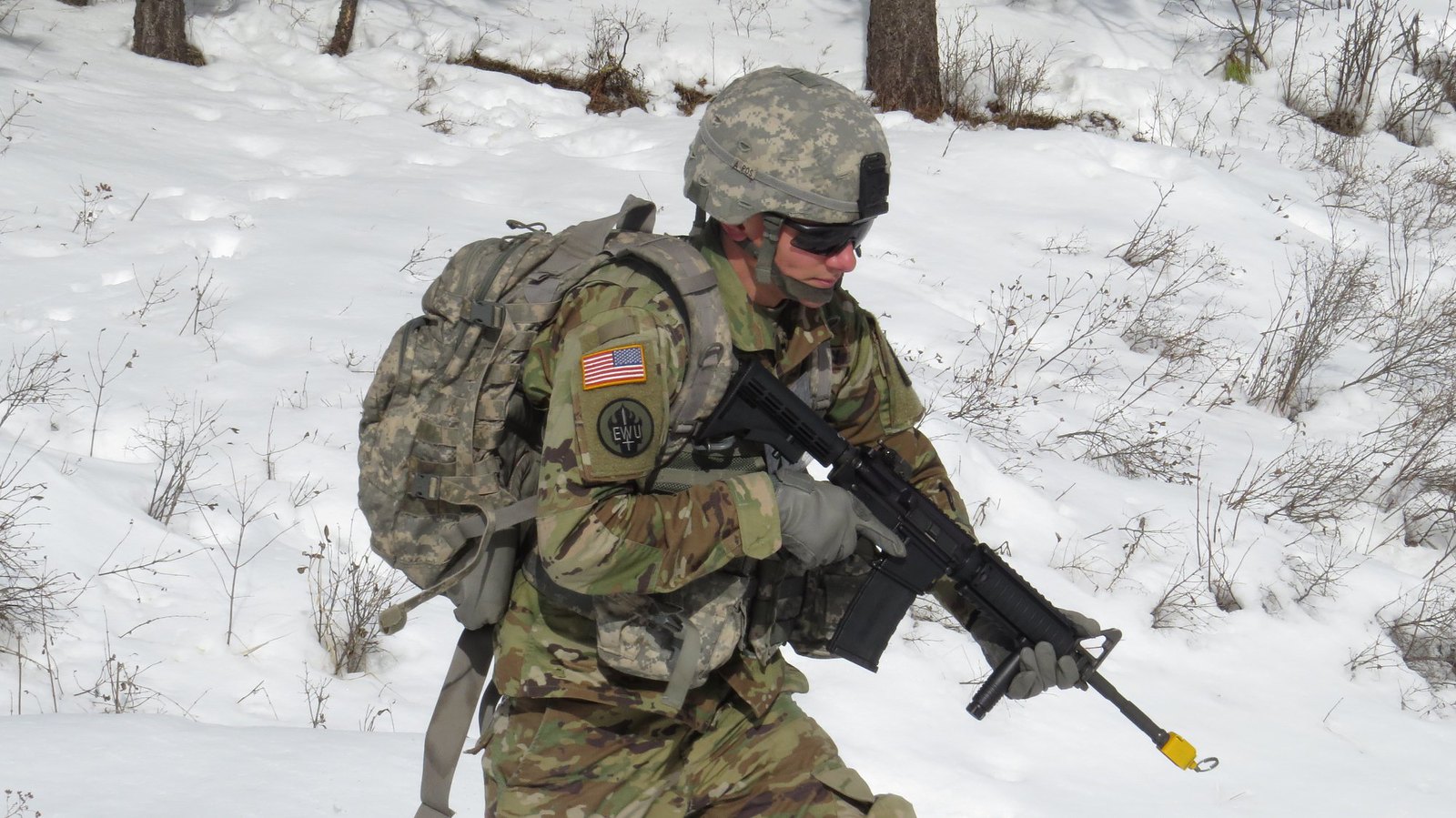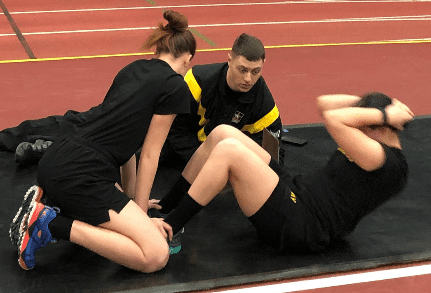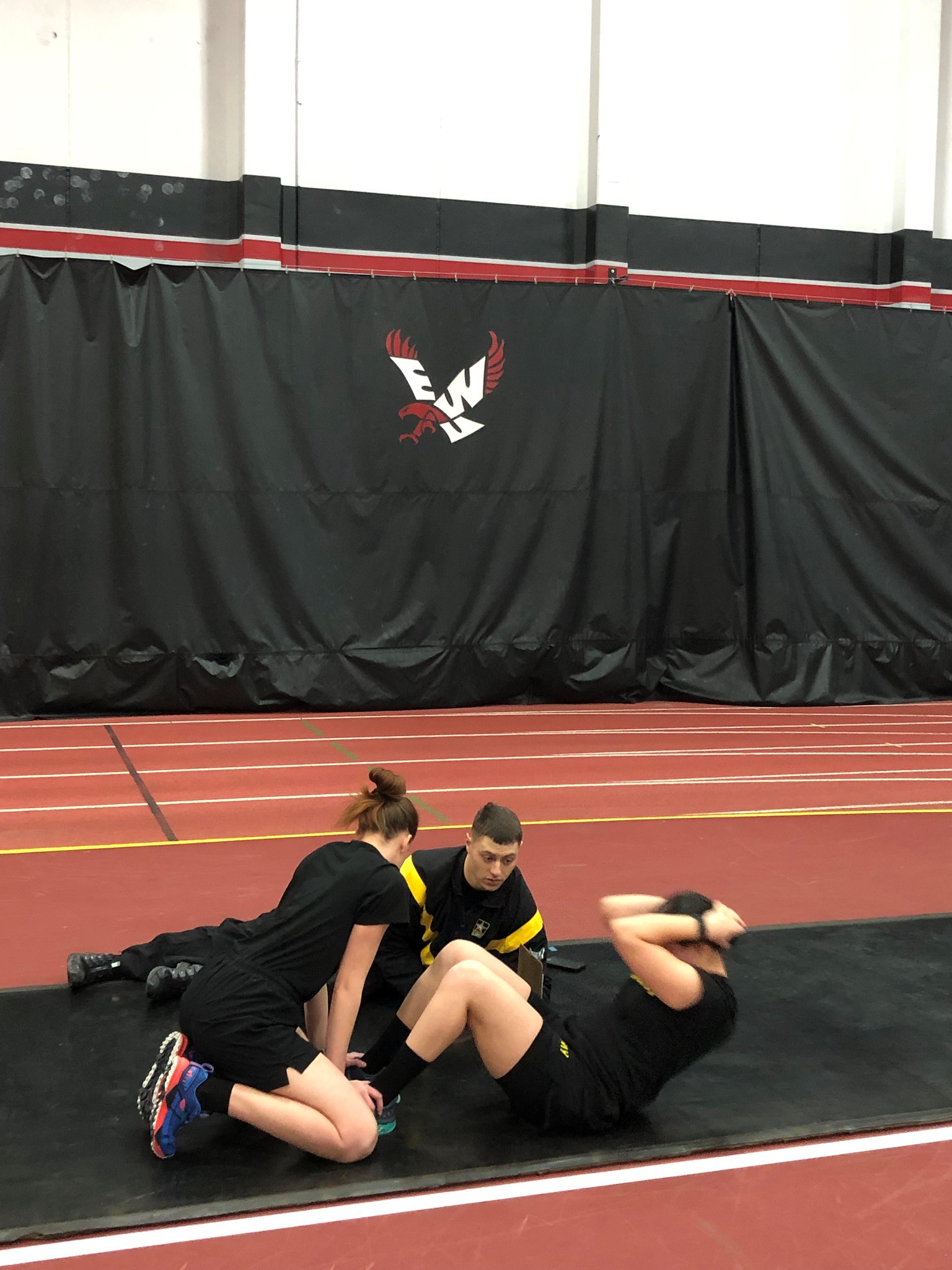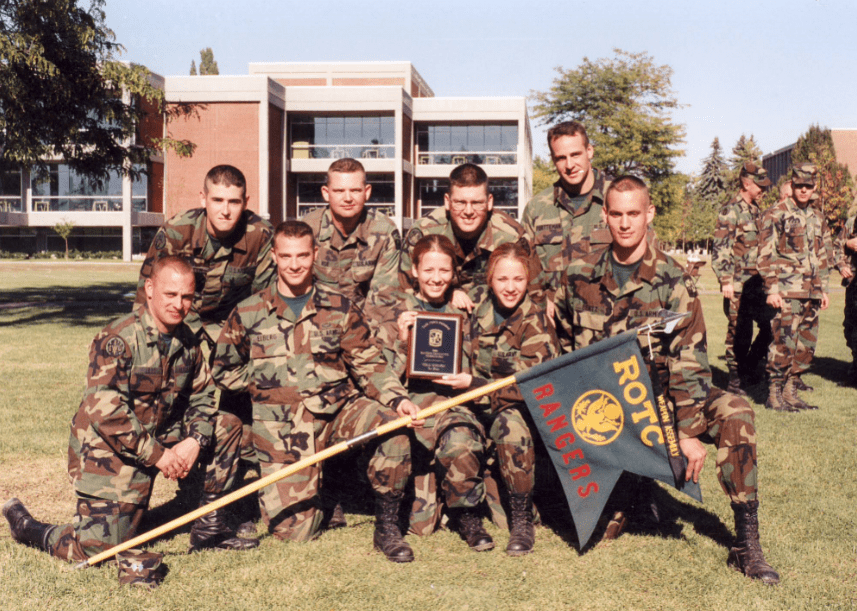On March 15, 2019, the Eastern Washington University (EWU) Reserve Officer Training Corps (ROTC) held our annual Military Ball also known as a dining out. The Military Ball was attended by 150 EWU Cadre, ROTC supporters, Cadets, and family members. We were honored to also have alumni and local recruiters from the US Army and National Guard attend as well.
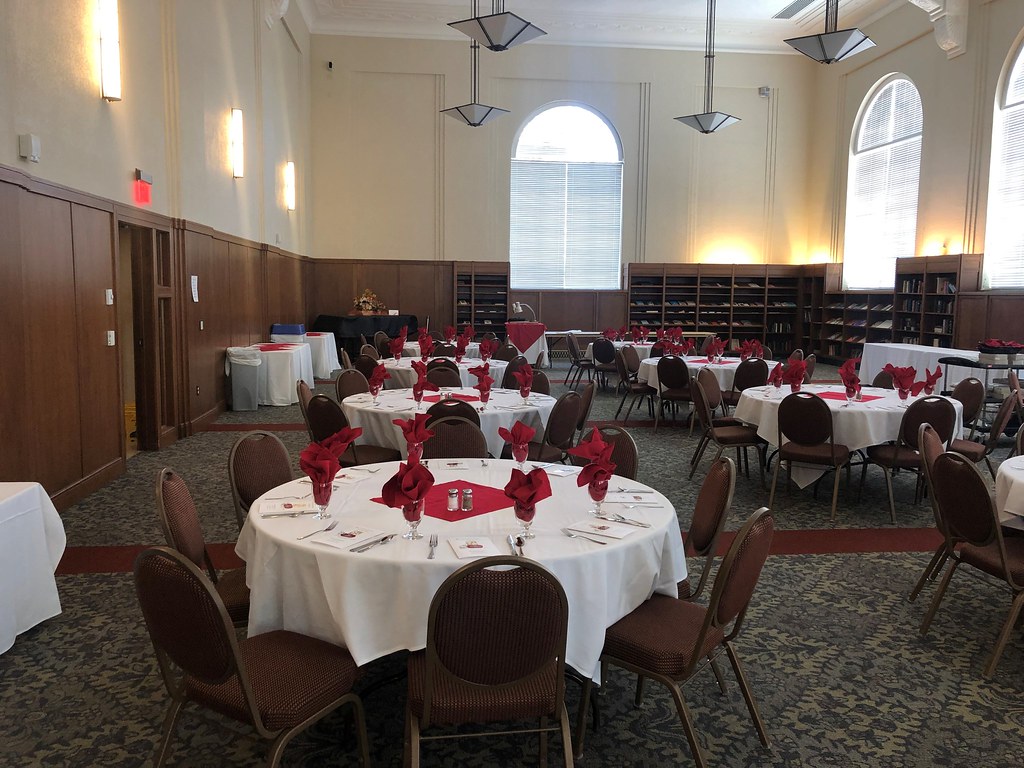
The Reading Room at Hargreaves Hall is set up for the 62nd Annual ROTC Military Ball.
The ball was held at the historic Hargreaves Hall on the EWU campus. The building was named after former EWU President Richard Hargreaves. Dr. Hargreaves became president of the university in 1926 when the campus did not have its own library. During his presidency, Dr. Hargreaves advocated to have a library constructed on campus. Finally a library was constructed in 1940 a year after Hargreaves passed away. Hargreaves Library was named in his honor.

EWU ROTC Color Guard posts the colors during the Hargreaves Hall Reading Room.
Hargreaves Library remained the campus’s main library until the 1960’s when the much larger JFK Library was constructed. The old library was remodeled into office and classroom space. In 2009 additional remodeling was done to modernize the building while still maintaining its historic library charm. One of the major renovations was the beautiful ballroom constructed in the former library reading room. It was fitting that this historic room ringed with classic books was used to host the Military Ball which is one of the longest running traditions at EWU stretching back to 1957.
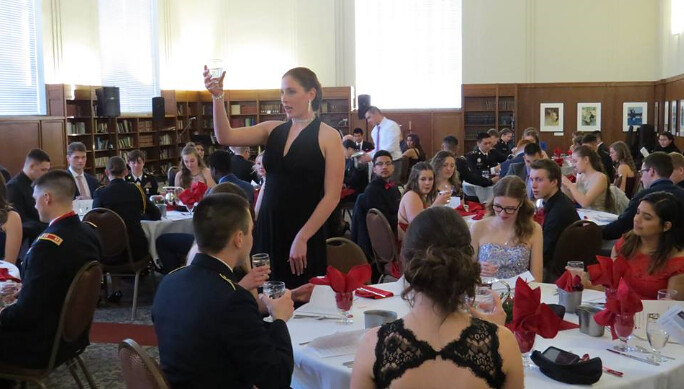
EWU ROTC Cadet Jennafer Knight proposes a toast during the 2019 Military Ball.
However, the history of military dining outs stretches back even further, to the days of the Roman empire. Over 2,000 years ago Roman commanders held feasts with their officers and guests to celebrate great victories and showcase plunder from their conquests. Over 1,500 years ago the Vikings also held feasts where the commander sat at a head table with his warlords in descending order of rank. From the head table they sat and watched great feats of strengths from their men as they dined. These Roman and Viking traditions were then transplanted to England during centuries of Roman and Viking conquests. These feasts in Medieval England were eventually held on round tables where knights sat and celebrated their victories.
Centuries later after the creation of the British Empire, the dining out tradition became very formalized to promote camaraderie with troops stationed abroad to include in the American colonies. From this British military custom is where the US military tradition of a dining out comes; guests of honor sit at a head table while the rest of the attendees sit around round tables. It is through hosting the annual ROTC Military Ball that our EWU Cadets learn about this military tradition and how to properly host a formal dining out.
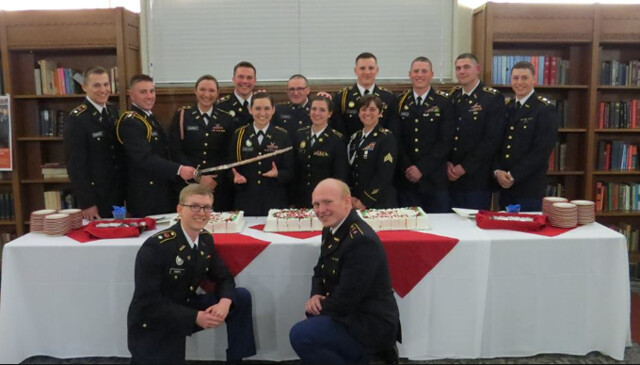
2019 EWU ROTC commissionees pose for a cake cutting picture.
However, this military tradition at Eastern would not have been possible without the great support of EWU Dinning Services. They did an amazing job setting up the reading room and preparing outstanding food. They also established a designated room for our professional photographer to set up a picture studio where all guests could have pictures taken.
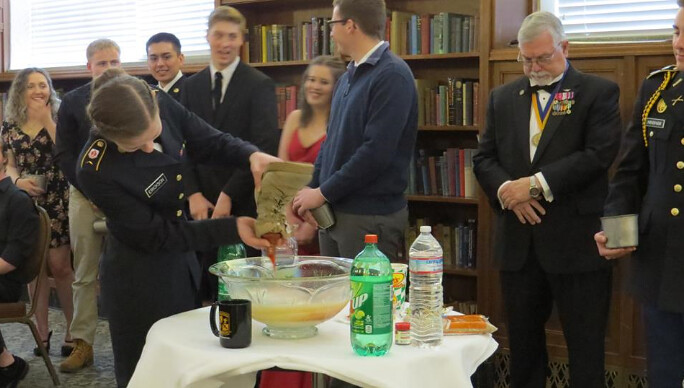
EWU ROTC Cadets and alumni pour ingredients into the Grog Bowl.
Definitely the part of the dining out that the guests enjoyed the most was the Grog Ceremony. Cadets and alumni came forward to pour various ingredients into a grog bowl that had certain meaning to the ROTC program. After all the ingredients were mixed, the grog bowl was then stirred and ready to be drank. Cadets caught breaking the rules of the mess were then nominated to drink from the grog bowl.
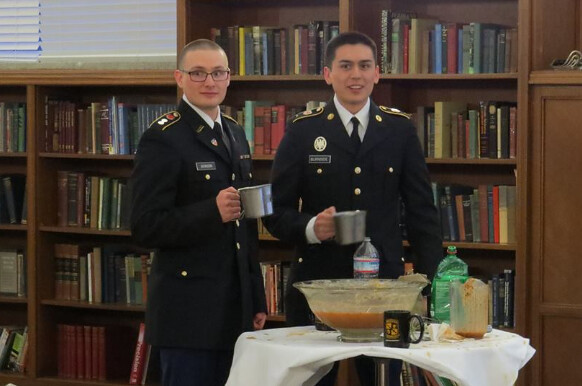
Cadets Jordan Johnson (left) and Adam Burnside (right) drink from the Grog Bowl.
After the grog ceremony our guest speaker, a 1968 EWU ROTC graduate, Retired Colonel Al Watson gave his remarks. He gave an inspiring speech about small unit leadership that he experienced in his career to include being a lieutenant during the Vietnam War.
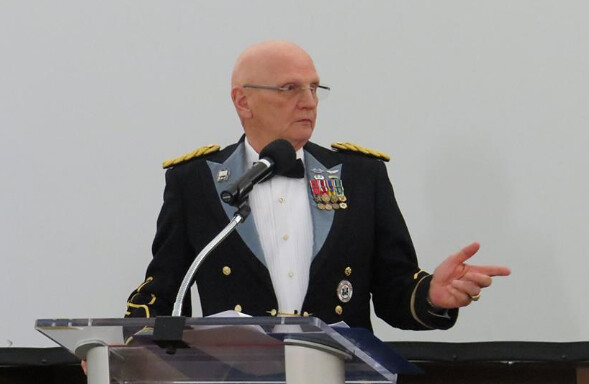
Retired Colonel Al Watson was the 2019 ROTC Military Ball guest speaker.
The Military Ball concluded with each ROTC class showing a video they made. The rest of night the guests were able to show their moves on the dance floor to the jazz music provided by the Washington National Guard Band.

Washington National Guard Band plays during the 2019 ROTC Military Ball.
It was truly a great night for the Fighting Eagles battalion. The night was made possible by the great coordination done by our lead planners Cadets Scott Hinshaw and Tyler Bergman. Special recognition goes out to the EWU Dining Services and the Washington National Guard Band for their great support to the dining out as well. Special thank yous also to all the alumni and supporters of the program that helped make the night possible. More pictures from the event can be found on the following EWU ROTC Facebook links: (link 1, link 2, and link 3)
Go ROTC! Go Fighting Eagles!
